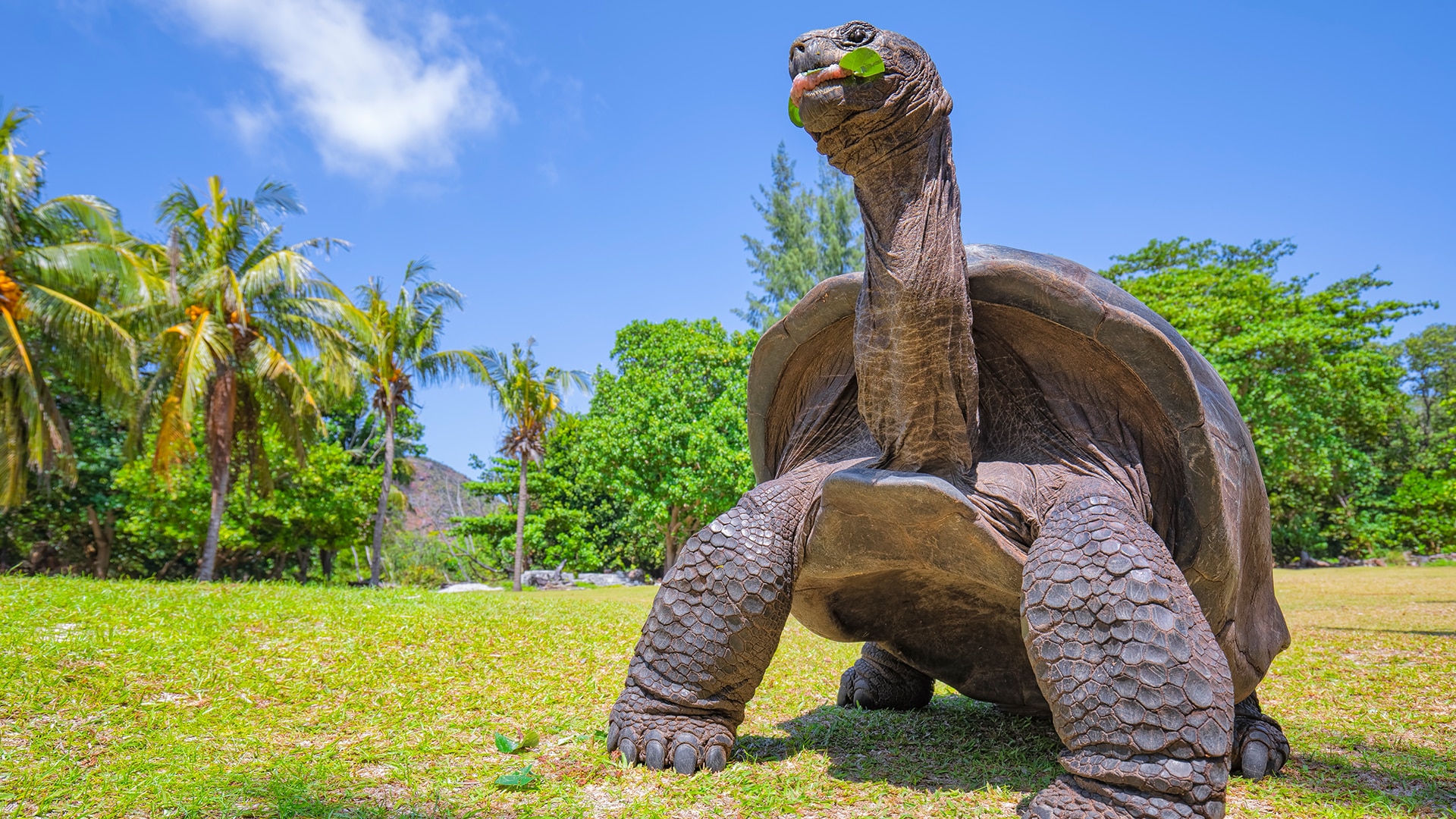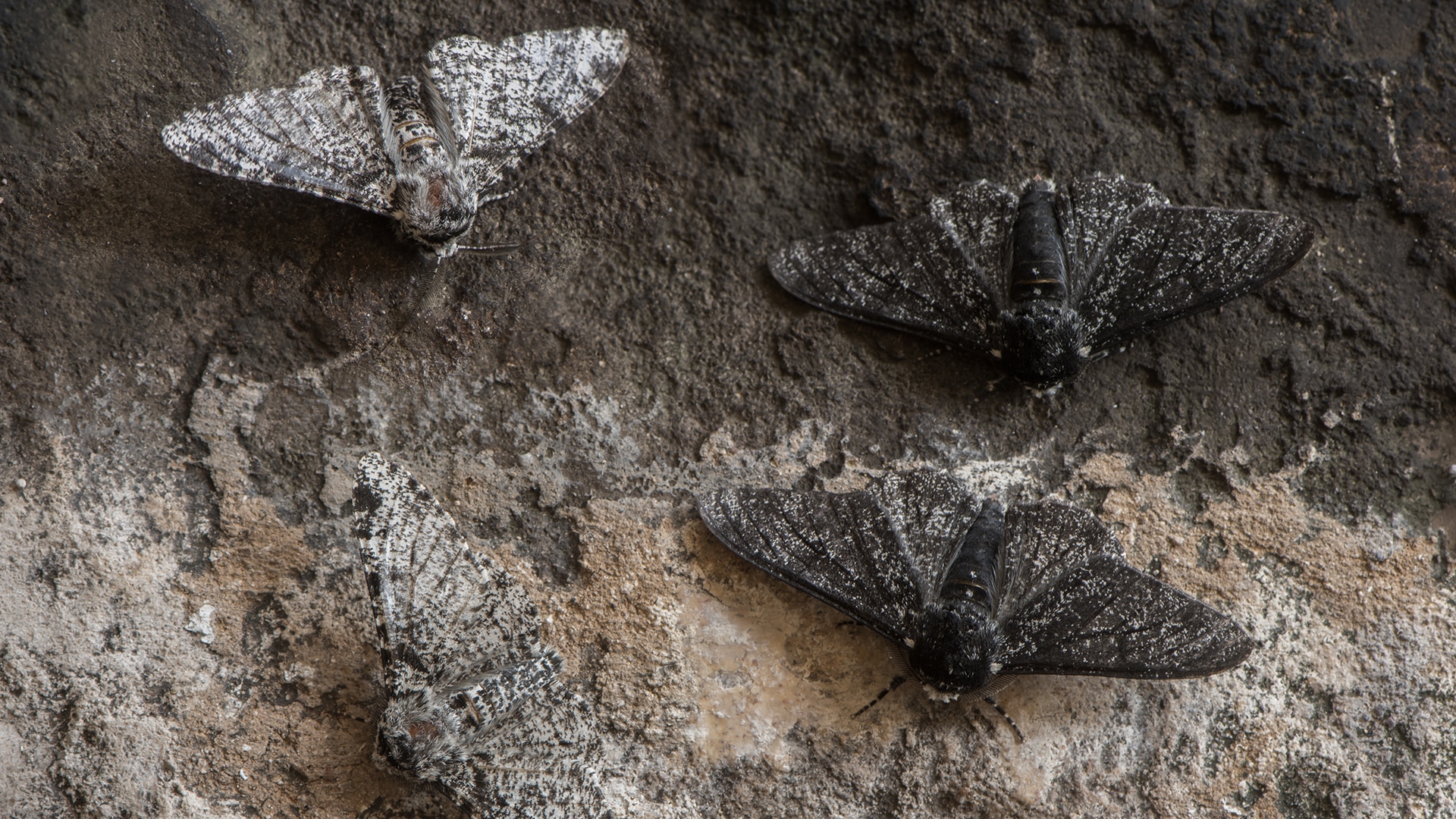

BBC Earth Podcast
Close your eyes and open your ears
Intimate stories and surprising truths about nature, science and the human experience in a podcast the size of the planet.
A Perfect Planet
On an idyllic coral atoll (ring-shaped coral reef) in the Seychelles, humans are outnumbered by a population of giant tortoises.
Over 100,0001 of these massive reptiles roam and reign in Aldabra, and they’re the last survivors of a species once found on other Indian Ocean islands. Like humans, the giant tortoises each side of the atoll all boast distinct personalities. But there’s something else that sets them apart: their difference in size.

One side of the atoll is a barren landscape. Trees are scarce and large volumes of plastic litter from Africa float onto the shore. The tortoises here are accompanied not by people, but by their discarded flip flops2.
However, over 20 miles away on the other side of the atoll, it is a dense green landscape. The tortoises here are much bigger – and there is no breeding with the smaller variety.
Huw Cordey spent time in Aldabra filming for the latest David Attenborough landmark series, A Perfect Planet. The different size of tortoises, comparing one side of the atoll to the other, is something he spoke about on the BBC Earth podcast.
There is a theory that the tortoises on the more barren side had all their large animals picked off by sailors, so the genetics of these animals changed."
In the 17th century, sailors dined on – and nearly drove to extinction – giant tortoises. Because of these reptiles' ability to survive months without water or food, they were deemed the perfect provision for long voyages.
For millennia, humans have been influencing the evolution of domesticated species such as dogs, pigs, and cows. But beyond this intentional domestication, we know that humanity is also unintentionally driving the evolution of other species.
Put simply, we inherit our genes, which are the small sections within DNA, from our parents, and these genes influence an individual’s characteristics, such as hair or eye colour.
Genes can change accidentally (a process known as mutation). During the industrial revolution, a gene mutation saw the emergence of peppered moths that were darker in colour. In the newly polluted cities, this murkier “camouflage” meant more of the darker peppered moths were able to breed.

There are also instances in which species are separated and no longer interbreed, meaning that over a long period of time they can develop into two or more distinct species, or become extinct.
Mosquitoes in London’s underground were discovered to have remarkably different behaviours to their above ground counterparts, including feeding on mammals due to the absence of birds, and breeding in confined spaces. The two different populations of mosquitoes3 were also found to have large genetic differences. This geographical dislocation and lack of interbreeding had produced a new species.
But is it possible that even on the Aldabra atoll, one of the most remote places on our planet, humans have influenced the genetics of giant tortoises?
At present, the idea is little more than a theory.

“We have not been able to show that this plasticity in body size is expressed genetically yet,” says the Director of the Indian Ocean Tortoise Alliance, Richard Baxter.
“It’s most likely that they have access to more food and less competition, so can grow much larger.”
“But it might be the case that these larger animals are more successful at breeding, which would influence the genetic makeup of the atoll.”
In other words, it could just be the case that moving the smaller tortoises to the other side of the atoll where they have more access to food would help them grow bigger. But if the gene for ‘largeness’ is something heritable and the larger tortoises are able to reproduce more easily, then that, over time, is what meant the tortoises on the atoll evolved to become bigger.
Baxter adds, however, that human activity which drew giant tortoises close to extinction has also caused the tortoise population to lose genetic variation. This, he says, may lead to more deformities or less resilience to disease.
It might be the case that these larger animals are more successful at breeding, which would influence the genetic makeup of the atoll."
Genetic variation refers to the biological differences within and between a species, and it will increase the probability of a species being able to survive future threats, such as climate change or disease. A well-known example of risks involved in not having enough genetic variation was seen in the 1990s when increasing urbanisation in Florida isolated and reduced the Florida panther population numbers to just 20-25.
Those that remained had problems related to inbreeding, including heart abnormalities, low sperm count, and reduced immune responses. This left them on the brink of extinction.
It was only after the introduction of eight Texas mountain lions - who the Florida panther historically bred with – that a reduction in abnormalities occurred and the population size increased4.
So while we know broadly that humans are having an impact on other species’ evolution and decline, to conclude whether that impact is largely positive or negative is trickier.
The general expectation is that humans have a negative effect because what we’re doing to the environment is awful."
“The general expectation is that humans have a negative effect because what we’re doing to the environment is awful,” says Katie Millette, whose study5 set out to assess the human impact on animal genetic diversity worldwide, due to population density and land use.
Her paper examined data collected from more than 175,000 genetic sequences of over 17,000 species of birds, fish, insects and mammals.
“We saw changes in genetic diversity in some species. We saw there was a decline in fish genetic diversity with intense land use, and a decline in insect genetic diversity as you increase human population density. But we also saw that for some species, human activity led to positive changes,” she explained.

In some cases human influences such as urbanisation was shown to have a negative impact on a species genetic diversity. But in other cases it can lead to species being moved around and connecting with other populations, which may improve their likelihood of survival.
But as with many questions that require a conclusive answer, the ability to provide one hinges on the availability of sufficient and reliable data – something that Millette says we need more of.
“A lot of the data available in databases is not adequate enough to answer the question about the effects of humans on animal genetic diversity. Our paper shows that humans are having an effect, but with a very crude and out of focus picture.”
Featured image © Vuk8691 | Getty
1. 100,000 giant reptiles, 2. Flip flops, 3. London Underground mosquitoes, 4. Florida panther, 5. Katie Millette


Intimate stories and surprising truths about nature, science and the human experience in a podcast the size of the planet.